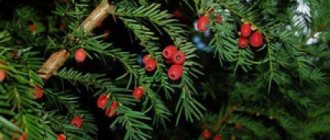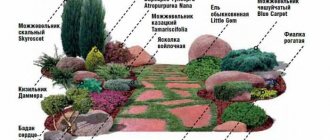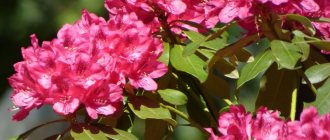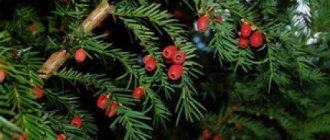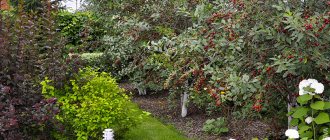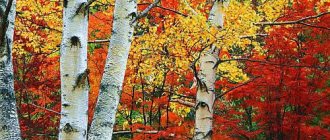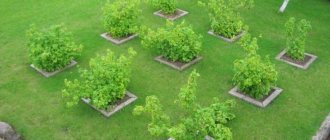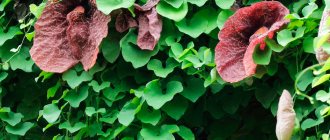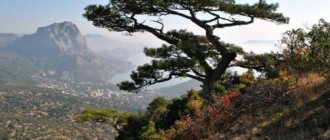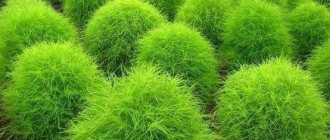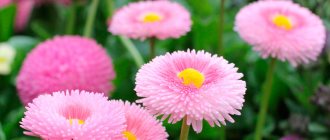History of the creation of the reserve
Until about the middle of the 18th century. The territory where the South Ural Nature Reserve is now located was considered poorly developed.
For example, looking at a textbook on the history of the region, you can find out that by 1795 only three small villages were built here - Berdagulovo, Aripkulovo and Ilmyashevo.
People here in the XVIII-XIX centuries. They were mainly engaged in semi-nomadic cattle breeding, sometimes beekeeping. By the way, it should be noted that to this day, bevel trees have been preserved in the reserve.
In the 18th century The so-called mining stage of the development of the Southern Urals began: iron smelting plants were built right on the border of the reserve. Large-scale, sometimes thoughtless, and therefore destructive logging began. The construction of charcoal kilns also required a huge amount of resources. In addition, iron ore deposits were developed on the territory of the reserve.
In 1924, fortunately for the environment, the factories were stopped and then closed, and the timber industry developed.
Top five for the northern Urals
It is guaranteed that shrubs will grow in the Northern Urals, the wild relatives of which are found in the local taiga. A selection of photos will allow you to choose the ones that are suitable for a particular garden. Among them, the following types are the most promising.
Honeysuckle
- Forest honeysuckle. An elegant shrub with bright white flowers planted in pairs at the ends of the shoots. Surprisingly hardy, especially on limed soils. It easily withstands systematic cutting and is therefore often used for loose hedges. The disadvantage is the toxicity of the berries (other names for the species: wolf berries, wolf bast).
- Juniper. Like other coniferous shrubs, this species tolerates harsh climates well, but you need to take the choice of variety seriously: many modern varieties are bred for the southern regions. This is one of the best tapeworms for lawns or path edges and goes well with any garden plants.
- Rowan. In northern latitudes, mountain ash forms as a shrub and can grow on dry, infertile soils. She is whimsical only to the light. Looks amazing next to fir, spruce and other conifers.
Rowan
- Dahurian rhododendron. A spectacular shrub literally bursting with pink in spring. It tolerates gravelly soil, a slight lack of moisture and frosts above 40 degrees. Blooms brighter in good light.
With good care in the north of the Perm Territory, you can also grow Thunberg barberry, rose hips, and shrubby cinquefoil.
Advice. When choosing shrubs for planting in the Urals, give preference to old, proven varieties bred in Russia and therefore accustomed to the cold.
Barberry
The most common type of this shrub in the Urals is common barberry. Plant height is up to 2 meters. The stems are abundantly equipped with thorns, the leaves densely entwine the branches and have a very beautiful dark purple color. This creates a very impressive contrast with the yellow-orange flowers and bright red fruits and berries. Therefore, barberry is readily used by people as a garden shrub.
The berries are edible and also very healthy. Used for medicinal purposes. During flowering, the common barberry emits a very pleasant aroma and attracts many insects. It is often used for hedges. Resistant to frost, but easily affected by parasites and fungi.
Ornamental shrubs for the Ural region
Derain
Derain has several varieties. Even in winter, some bushes look quite original. They have a bright red color. In some species of derain, a bright border is visible on the leaves.
The shrub grows up to 1.8...2.1 m. Annual pruning is recommended. Shrubs lend themselves well to formation during the summer. This shrub has excellent winter hardiness. The plant can withstand heat in summer.
Recommendations for planting and growing turf.
| Landing dates | Preparing the soil for seedlings | Feeding and timing | Notes |
| Planting can be done after the snow cover has melted and the soil has warmed up to 5...6 ⁰C (April...May). The retail chain offers planting material in pots and with a lump of earth. When planting in pots, planting is allowed in the period May-September. | Grows well in sunny places and in the shade. Prefers neutral, slightly alkaline soils (pH = 6.5...7.0). You need a hole with a diameter of 40...60 cm and a depth of 60...70 cm. Crushed stone is poured at the bottom, then there will be a guaranteed outflow of moisture. It is recommended to add lowland peat, humus, turf soil and garden soil to the soil composition. Rabbit manure 50...70 g per plant is poured onto the bottom. | Feeding with liquid organic fertilizers is recommended. It is preferable to use an infusion of cattle manure. 4...8 liters are poured under each bush, depending on the size of the plant. Feeding with mineral fertilizers is possible. It is necessary to apply up to 40...45 g of fertilizer for each plant (NPK = 2:1:0.5) During the summer period, the shrub needs to be fed twice. | White dogwood is distinguished by an abundance of light leaves. In autumn they turn pink. After the leaves fall, bright red stems remain; they look impressive against the background of white snow. The holly leaf has a white border along the edge of the leaf. Annual anti-aging pruning is recommended; the plant quickly restores its size and volume. Derain is used as a green fence for areas. |
Barberry
Barberry has several varieties. It grows in flat areas; in mountainous areas it will grow as a small tree. Blooms profusely and bears fruit regularly.
Barberry hedges look quite picturesque. In gardens, plants grow up to 1.5...2.5 m.
Recommendations for planting and caring for barberry.
| Landing dates | Preparing the soil for seedlings | Feeding and timing | Notes |
| Spring (April...May), soil temperature 7...9 ⁰С. The plant produces root suckers. It is often propagated by layering. In the retail chain they sell it in pots and with a lump of earth. When planting in pots, planting is allowed in the period May-September. | Grows well in sunny places and can withstand shade. Prefers neutral soils (pH = 6.0...6.5). You need a hole with a diameter of 60...70 cm and a depth of 60...80 cm. It is advisable to add up to 30...40% high-moor peat and 20...30% humus and turf soil to the composition of the planting soil (garden soil is allowed). Ammophoska up to 30...40 g and gypsum 20...30 g per plant are poured onto the bottom. | Feeding with liquid organic fertilizers is recommended. It is preferable to use rabbit manure or cattle infusion. From 3 to 7 liters is poured under each bush, depending on the size of the plant. Bushes aged 2 years and older are fed with complex mineral fertilizers 2 times a summer. Needs abundant watering. | With sufficient sunlight, the bush grows faster. It produces fruits used in nutrition. Most often, barberry is dried after blanching in a boiling soda solution. The bushes are used to form a hedge. The plant allows for dense planting, so it is formed on a trellis wire, the planting distance is 1.2...1.7 m. |
Spirea
The frost-resistant shrub is quite unpretentious. Blooms profusely. There are plants that bloom in spring. There is a group of plants that bloom in summer and autumn.
Pruning after flowering is complete is recommended. Then next year new growth will form, where new flowers will grow. Without pruning, the plant looks untidy.
The height of most types of bushes is 60...90 cm. There are species (Crispa) that can grow up to 2 m.
Rose hip
Perhaps one of the most valuable shrubs in both wild and cultivated form. The height of the plant is up to 2 m, the branches are red-brown, shiny, covered with curved thorns. The flowers are pink and bright. This plant belongs to the Rosaceae family. The leaves are round, collected in several pieces on one petiole. The edge is finely cut. Rose hips are bright orange, elliptical or round in shape.
Since ancient times, this plant has been considered a healing source of important substances and vitamins. Avicenna also called rose hips a remedy for liver diseases. Today this plant is valued not only for its medicinal properties, but also for its beautiful appearance and unpretentiousness to living conditions. Delicate crimson roses leave no one indifferent. Flowering continues from mid-May to the end of June.
All parts of the plant except leaves are used to make medicines: fruits, roots, stems and flowers. The most valuable substances in the plant are carotenoids, vitamins B and PP, flavonoids, organic acids, and essential oils.
Common lilac
This plant is only one species of many belonging to the general genus Lilac of the Oleaceae family. This shrub is famous not only in the Urals, but throughout almost the entire territory of our country.
Beautiful fragrant inflorescences, consisting of many clusters of small delicate flowers, attract not only pollinating insects, but also animals, birds, and people. The color of the corollas varies: from snow-white to lilac-pink. Used for decorative and medicinal purposes.
What types of shrubs are there?
Any plant can have several varieties, based on information from which gardeners can understand how to care for them. There are several criteria that determine the types of wild shrubs:
- Height. These can be low-growing (even dwarf) or tall wild shrubs, similar to trees.
- Leaves. There are both deciduous shrubs with traditional-looking leaves, and coniferous shrubs with modified ones.
- Bloom. Individual groups may produce fragrant flowers, berries, or even bear fruit.
- Flowering time. Among the wild shrubs you can find those that grow only in summer, while others delight the eye all year round. Some bloom in one season, while others can be called long-flowering.
Deciduous
In cities and beyond, it is more common to see plants with leaves. They can come in different shapes or sizes depending on the type of particular representative. Wild deciduous shrubs are amazing in their diversity: there are both flowering and fruit-bearing ones. Some of them are known to every person, while the names of others mean nothing. Among the deciduous ones we can distinguish:
- Barberry. The shrub has leaves with a pointed tip, small yellow flowers, and oblong berries.
- Kalina. The leaves look like maple.
- Cotoneaster. It resembles a small tree with oval glossy leaves.
- Lilac. Beautifully flowering, belongs to the evergreen shrubs.
- Magnolia. It is a large shrub. There are white, pink or even orange fragrant flowers.
- Daphne. A beautiful but poisonous plant.
- Euonymus. It consists of rounded leaves, but the flowers do not attract attention.
- Honeysuckle. The elliptical leaves are complemented by small fruits, which are edible in some varieties.
- Raspberries. A shrub with tasty berries has odd-pinnate leaves.
- Rose hip. Fragrant flowers in combination with berries and small leaves present a very beautiful shrub to the eye.
Conifers
If the plant does not have leaves, then most likely they are covered with needles. In fact, this is what modified leaves are called, but shrubs of this type are grouped under the class of conifers. Most of these representatives of the flora prefer to grow in the sun, but there are some that will like partial shade. Coniferous plants: shrubs and trees are unpretentious, therefore they are often used when decorating garden plots. Juniper, yew, and cryptomeria are more common among gardeners.
Flowers and herbs
Ural licorice
An herbaceous perennial of the legume family, often growing more than 1 m in height. Stems are straight and strong. The leaves are imparipinnate, located on short petioles. The flowers are purple-white, collected in a racemose inflorescence. Flowering occurs in May-July. The fruits are leathery, oblong-shaped beans, twisted in an inflorescence, ripening in late summer. The plant is often found in floodplains, near various reservoirs and on the banks of irrigation canals. Licorice root is actively used for medicinal purposes.
Rebrocarp Ural
Photo: Nikolay Stepanov/Wikimedia Commons
A perennial herbaceous plant of the Umbelliferae family, reaching a height of 2 m. The stem is erect, glabrous, up to 2 cm thick, at the apex, under the inflorescence, hairy. The leaves in the lower part of the plant are trifoliate at the base, located on long petioles, and do not exceed 25 cm in length and width. The upper leaves are smaller and less complexly dissected. The terminal umbel is large, up to 20 cm thick, with several dozen hairy rays. It is surrounded by smaller umbrellas, up to 7 cm thick. The petals are white, ovoid, up to 3.5 mm long. Flowering occurs in June-July. Rebrocarp grows in forests and clearings.
Ural anemone
Photo: cicon.ru
Herbaceous plant of the buttercup family. Grows up to 25 cm. The stem is straight, leafy. The leaves are trifoliate, located on hairy petioles. Blooms in spring. The flowers are single, with 5 petals of cream, pink, pale yellow or blue. Endemic to the Urals. It grows in river valleys among bird cherry and alder bushes.
Cotoneaster brilliant
A plant widespread in the Urals. It is often found both in nature and in gardens and summer cottages. It has become so famous for its attractive appearance: tall bushes (up to 3 meters) with a spreading crown of interesting leaf shapes.
The main advantage is frost resistance and drought resistance. The brilliant cotoneaster received its name for the corresponding surfaces of the leaves. The flowers are collected in inflorescences, small, white or pinkish. The fruits are bright red, non-poisonous. They are a source of food for many birds and animals.
For decorative purposes, cotoneaster species are used to create hedges with beautiful clusters of hanging black or red fruits.
Winter-hardy shrubs for the Middle and Southern Urals
The climate of the Ural region is characterized by rather cold winters. There are often days and nights when the temperature drops below –30…–35 ⁰С, sometimes the duration of the cold period reaches up to 15…20 days. In this case, the soil freezes to a depth of 160...190 cm.
Frosts often come in the fall, when there is still no permanent snow cover on the surface. This is the time that is most dangerous for trees and shrubs.
A layer of snow softens the effects of frost. It has been noticed that at a depth of more than 1.5 m, even on the most frosty days, the temperature does not drop below –4…–6 ⁰С. In some years, the soil freezes much less, no more than 1 m.
The root system of shrubs is located at a depth of 20...60 cm. Therefore, autumn frost is dangerous for them. If the plant has not completed the process of lignification, then it is more susceptible to freezing.
Many bushes grow wild and can be transplanted from the surrounding area and placed in your own garden. They will grow without any problems.
In summer, the air temperature can rise to +30...+35 ⁰С, on some days you can see +40 ⁰С on the thermometer in the shade. In the sun, higher values are possible. Therefore, subtropical crops may also suffer from overheating.
Berry trees
Along with fruit trees, berry trees are welcome guests in gardens. They also exist in a great variety of species and varieties; with good care, they bear fruit abundantly and grow actively.
Another popular representative of the Pink family is cherry. This culture grows both in the form of a shrub plant (up to 3 m) and in the form of a tree (up to 8 m). Moreover, tree-like forms begin to bear fruit somewhat later than bush forms.
We invite you to familiarize yourself with Mushroom soup from wild mushrooms recipe with photos step by step
Cherries grow almost everywhere, excluding deserts and the far north. The tree lives relatively short, about 30 years.
There are a huge number of varieties of this tree, some of them are self-fertile, others are not. So it is advisable to have several cherries on the plot, at least 2 varieties.
For seedlings, it is recommended to find well-lit places with sandy loam soil. Cherry does not like heavy soil and stagnant water at the roots. But it can withstand drought, although it requires summer watering in the first years after planting.
Cherries are resistant to winter frosts, although sometimes when temperatures are too low, about 90 percent of the flower buds freeze. Most of all, the tree “does not like” winter winds and blizzards; in a windy place it can die even in relatively mild frosts.
Cherry fruits
Cherries
The oldest variety of cherry is sweet cherry (also known as bird cherry); it is a fairly tall tree, up to 10 meters. Sometimes there are large ones up to 30 m tall. The root system is usually horizontal, but under special conditions vertically directed roots can develop.
Cherries begin to bear fruit at 4-5 years of age; in total, the tree can live up to 100 years. This tree, like cherry, does not like stagnant moisture, cold winds and heavily shaded places.
In spring, cherries need formative pruning and feeding (from the 4th year of growth).
Note! In spring, it is important to treat the tree trunks of fruit trees and shrubs, lightly loosening the soil and removing debris and weeds.
Sea buckthorn branches in berries
Sea buckthorn
Sea buckthorn is a tree (it can also grow in the form of a bush) that has not only useful, but also decorative properties.
The height of the plant can reach 10 m, the root system is superficial and highly branched. Sea buckthorn blooms inconspicuously; its real decoration is its bright orange berries. They have a specific taste, but are very healthy.
It makes sense to plant only female specimens on the site, since male ones do not produce berries. It is not difficult to distinguish them: the buds on female trees are smaller, with a couple of scales. For men, they are larger and “shaggy”. This becomes noticeable only in the 3-4th year of the plant’s life.
The selected place on the site should be well lit; it would be nice if the soil was slightly moist, but without an excess of water.
Berries
Common cranberry
An evergreen small shrub of the heather family. Numerous thin stems spread along the ground. The leaves are ovoid in shape with a sharp tip and slightly curled edges. The upper side of the leaf blade is dark green, with a glossy sheen, the lower side is white, with a bluish bloom. Cranberries bloom in late spring, blooming pink-red flowers collected in clusters. Juicy bright red fruits ripen in autumn and have a sour taste. The shrub grows in swamps and often forms thickets. All parts of the plant serve as medicinal raw materials.
Stone berry
Photo: Simon Legner/Wikimedia Commons
Perennial herbaceous plant. Belongs to the rose family. The shoots spread along the ground and reach 1.5 m in length. The stem is erect, up to 30 cm tall. The leaves are divided into 3 segments, located on long petioles, have a rough structure, and are covered with stiff hairs. Flowering occurs in late spring - early summer. White small flowers are united at the top of the stem in inflorescences of 3-10 pieces. The red or orange-red fruits are a cluster of drupes that ripen in mid-summer. They are edible and have a sour taste. Drupe grows mainly in coniferous forests. Leaves and berries are used in folk medicine.
Blueberry
Photo: Jan Eckstein/Wikimedia Commons
Deciduous branched shrub of the heather family. The stems are woody, can reach 1 m in height, sometimes creeping along the ground. The bark is light brown or bluish. The leaves are dense, up to 3 cm long, located on short petioles, and have an oval shape with slightly rounded edges. The color of the upper side of the leaf is dark green, with a waxy coating, the lower part of the blade is light. By autumn the leaves turn red and then fall off. When flowering, small, drooping flowers of white or pink bloom. The edible blue berries ripen in mid-summer and have a pleasant, sweet taste. Blueberries grow in forest zones, tundra and mountains, and can form thickets of many kilometers.
European euonymus
Both wild and cultivated shrub plant. In some areas of our country it is cultivated as an industrial plant, since the roots of the euonymus contain gutta-percha.
Read also: Pink mondial rose photo
These wild shrubs grow up to 3 meters and higher in height. The leaves are quite large (up to 10 cm), oval in shape. The flowers are collected in inflorescences, so they become clearly visible. The color of the corolla is pink and white. After flowering, fruits are formed, red or dark pink. They are poisonous, but are used as medicines.
The decorative value of euonymus lies in its fruits and beautiful dense leaves. It is well suited for making spectacular hedges, which is why it is used in landscape design.
Wild shrubs of the Urals
Juniper
The juniper planted on the site looks great. The bush belongs to the cypress coniferous plants.
Recommendations for planting and caring for juniper
| Landing dates | Preparing the soil for seedlings | Feeding and timing | Notes |
| Spring (end of April - mid-May), preferably after the snow cover has melted and the soil has warmed up to 5...6 ⁰С. Autumn planting is not recommended. When planting in pots, planting is allowed in the period May-September. | Grows well in sunny places and can withstand light shade. Prefers slightly acidic soils (pH = 5.0...5.5). You need a hole with a diameter of 60 cm and a depth of 40...60. Crushed stone is poured onto the bottom to organize the drainage of excess moisture. It is advisable to add up to 30...50% high-moor peat and wood shavings (10...20%) to the composition of the planting soil. Ammophoska up to 30...35 g per plant is poured onto the bottom. | Feeding with liquid organic fertilizers is recommended. It is preferable to use an infusion of cattle manure. From 3 to 8 liters is poured under each bush, depending on the size of the plant. During the summer period it needs two to three feedings. | With sufficient sunlight, the bush grows faster. It produces fruits used in medicine. Ozonizes the air, recommended in areas where there are patients with weakened immune systems and lung diseases. |
Berry bushes (currants, raspberries, honeysuckle)
Berry plants look quite decorative. They bloom in spring, and in summer you can see a large number of black, white, red and dark blue berries among the foliage.
These plants can be trimmed and given a wide variety of shapes. The height of most reaches up to 1.1...1.4 m. The distance between plants can be up to 1.0...1.5 m.
Recommendations for planting and caring for berry ornamental shrubs.
| Landing dates | Preparing the soil for seedlings | Feeding and timing | Notes |
| Spring (April...May), soil temperature 7...9 ⁰С. Planting by root suckers (layerings) or cuttings is possible. When planting in pots, planting is allowed in the period May-September. | Grows well in sunny places, shading is not recommended. When combined with tall plants, they are planted on the south or west side. Prefers neutral soils (pH = 6.0...6.5). You need a hole with a diameter of 60 cm and a depth of 40...80 cm. It is advisable to add up to 30...50% high-moor peat and 30...40% humus and turf soil to the composition of the planting soil. Ammophoska up to 20...25 g per plant is poured onto the bottom. | Feeding with liquid organic fertilizers is recommended. It is preferable to use rabbit manure or cattle infusion. From 5 to 12 liters is poured under each bush, depending on the size of the plant. Bushes aged 2 years and older are fed with complex mineral fertilizers 2 times a summer. Needs abundant watering. | With sufficient sunlight, the bush grows faster. It produces fruits used in food, as well as for making jam, preparing compotes and freezing for use in winter. Dried plant leaves are used to make tea. The resulting solution contains aromatic substances and vitamin C. |
Fruit trees
There is a huge list of species and varieties of fruit and berry trees that get along in almost any climate. Now not only a resident of the Moscow region or Crimea, but also a gardener whose plot is located in Siberia can safely choose seedlings for the garden.
Apple tree with fruits
Apple tree
The apple tree is perhaps the most famous fruit variety. Trees are grown both in ordinary vegetable gardens and in farm gardens. A very unpretentious species that produces fairly shelf-stable (depending on the variety), tasty and healthy fruits.
Visually, it is a tree with a spreading crown, with a height of 2.5 to 10 m. There are so many varieties of apple trees that it is difficult to identify common features inherent in all trees of this species.
The apple tree begins to bear fruit 4-5 years after planting. In total, the tree can live about 40 years.
The apple tree has good resistance to frost and tolerates shading well. Doesn't require too frequent fertilizing. Young fruit trees can be planted both in spring and autumn. It is worth considering that the apple tree does not like drafts and stagnant moisture in the soil.
Important! In the first 2 years of a young tree’s life, all flowers that appear on it must be removed. They take away from the apple tree the strength it needs for growth and development.
Abundant fruiting of pear
This deciduous fruit tree with dark ovate leaves and smooth bark is the main competitor of the apple tree. Its lifespan is about 100 years. The garden beauty grows throughout European territory, as well as in Central Asia.
Pear loves loose, nutrient-rich soil, so it requires fertilizing and careful selection of the planting site. If the tree has taken root, it grows actively and can eventually reach a height of five meters.
It is advisable to plant in the fall, although it is also acceptable in the spring. It is necessary to choose a sunny place with loose soil. Pear also gets along well on loams. In the first 4 years of life, the seedling needs nitrogen fertilizing and watering in dry weather.
We invite you to familiarize yourself with Rose, a cultivated plant or a wild one – Green World
The pear begins to bear fruit in the 4-7th year of cultivation.
Ripe plum on the branches
A natural hybrid of sloe and cherry plum - plum, also a frequent guest in the gardens of the European part of Russia. It is a tall (up to 15 m) tree with an ovoid crown. The plum tree lives up to 25-30 years, of which only 15 bear fruit.
Planting plum trees is best done in spring or early autumn.
It is worth noting! Both seedlings and adult specimens are often attacked by pests, which are attracted by the juice of the fruit. Therefore, you should be prepared for regular spring and autumn spraying of plums with special compounds.
Mature trees, as a rule, endure winter without problems; it is advisable to wrap first-year seedlings in straw according to the standard. In the spring, mature trees need pruning, which is usually done in March.
Important! Plum produces a lot of root shoots. This is especially true for old and diseased trees, which are trying to “leave offspring” in this way. You can grow young plums from the shoots. If this is not planned, it is advisable to remove root shoots more often so that they do not take away the strength of the root.
Apricot tree
Apricot
Apricot is a relative of the plum, also belonging to the Rosaceae family. In memory of this affiliation, the old Russian name for the tree remained - yellow plum.
Apricot is a deciduous fruit tree up to 8 m in height. It blooms in April, and the flowers appear before the leaf blades, which makes the tree very beautiful at this time.
The tree lives for a long time, up to 100 years, begins to bear fruit from the 3rd year of life and continues for 30-40 years. Thanks to a strong root system that penetrates deep into the soil, it is not afraid of drought. Contrary to the belief that apricot is a southern plant, it quite withstands frosts down to -25°C, some varieties even down to -30°C.
It is worth noting! In the north, apricots are planted in the spring; in the middle zone and to the south, you can start planting seedlings in October. It is best to find a sunny, elevated place for them, with loamy, light soil.
Shrubs of Russia
Wild shrubs in our region are distinguished by great species diversity. They are widespread in all zones and latitudes, form deciduous and partly coniferous forests, and line hills and mountain ranges. Also among them there are many representatives that people use for decorative purposes in garden plots. Berries of some types are actively consumed as food and are valued for their vitamin components. Wild shrubs in Russia even have medicinal forms.
The most common species growing in the wild are:
- spirea;
- hawthorn;
- snowberry;
- viburnum;
- wild rosemary;
- common barberry;
- Schisandra chinensis;
- euonymus warty;
- daphne;
- common honeysuckle;
- caragana tree;
- black cotoneaster;
- swamp cranberry;
- common hazel;
- common raspberry;
- vesicular carp;
- Russian Hungarian;
- lilac;
- rose hip;
- mock orange and others.
The wild shrubs of our region are very beautiful, diverse in their role in nature and significance for humans. There are a number of species that people strive to plant and propagate on their plots of land for different purposes: decorative, nutritional, landscape design. Such representatives include the following wild trees and shrubs: bird cherry, blueberry, apple tree, ash, rose hip, thuja, pine, spruce, currant, plum, lilac, rowan, broom, nightshade, alder, sea buckthorn, juniper, raspberry, pear, hazel , viburnum, barberry, grapes, linden, lemongrass, gooseberry, buckthorn, maple, honeysuckle, oak and others.
Perennial and frost-resistant flowers for the Urals
The climate of the Urals is complex; unstable temperatures complicate the choice of perennial plants. Gardeners prefer to plant annual plants. But more experienced ones still prefer perennial crops that are frost-resistant.
Using the height of flowers, you can achieve a certain desired effect in the garden or country house. By combining and combining, you can make the composition voluminous and lush. Perennial flowers for the Urals.
short
The range of low-growing plantings is large. Generally, low-growing plants are used in the design of small flower beds, flower arrangements, and fences. The most common:
- Pansies. Flowers attract with a variety of color shades and a large selection of varieties. Bright flowers will delight you all summer. Often used when creating complex compositions. This is a perennial plant that will exist on the site for several years. Pansies do not require any special care.
- Phloxes. A plant with bright flowers that will also bloom throughout the summer. Plant height up to 30 cm. Very easy to combine with other perennial plants. Another plus is a wonderful aroma that will delight you all summer.
- Clematis. An ornamental plant that has the property of purifying the air. Flowering is abundant and long. There are special varieties for the climate of the Urals.
- Periwinkle. The plant is classified as traditional. Delicate pink or blue flowers spread like a carpet. Periwinkle blooms for a long time from early summer to autumn.
But low-growing perennial plants can also be found in cemeteries. People often decorate graves with them. Ease of care and frost resistance are the main conditions. Creeping plants or plants gathered in bunches are ideal for solving:
- saxifrage,
- pansies,
- periwinkle,
- phlox subulate,
- pure Byzantine,
- creeping tenacious,
- young.
Medium height
Medium-sized flowers add splendor and completeness to the composition. There is a large selection of plants to plant.
- Lily. Lilies are not whimsical, but at the same time they are very impressive. The plant feels great both in the sun and in the shade.
- Irises. Bright flowers with an incredible aroma. Gardeners like to plant several varieties (early and late) to enjoy a riot of colors all summer.
- Yarrow. Decorative yarrow is used. There are several varieties that adapt well to the natural conditions of the Urals.
Tall
Tall crops will complete the garden composition. The large size of the plant will help to distinguish the area from the rest.
- Astilbe. An excellent solution for a border. Reaches a height of 150 cm, the bright flowers are hard to miss. The plant is unpretentious in care.
- Rudbeckia. A sunny flower that attracts attention and will decorate the site. Does not require constant watering.
- Echinacea. Delicate lilac flowers with a brown core look spectacular in tandem with various flowers.
- The stock is a rose. She does not need the proximity of other flowers. The stems of the rose are strewn with lush flowers - roses.
